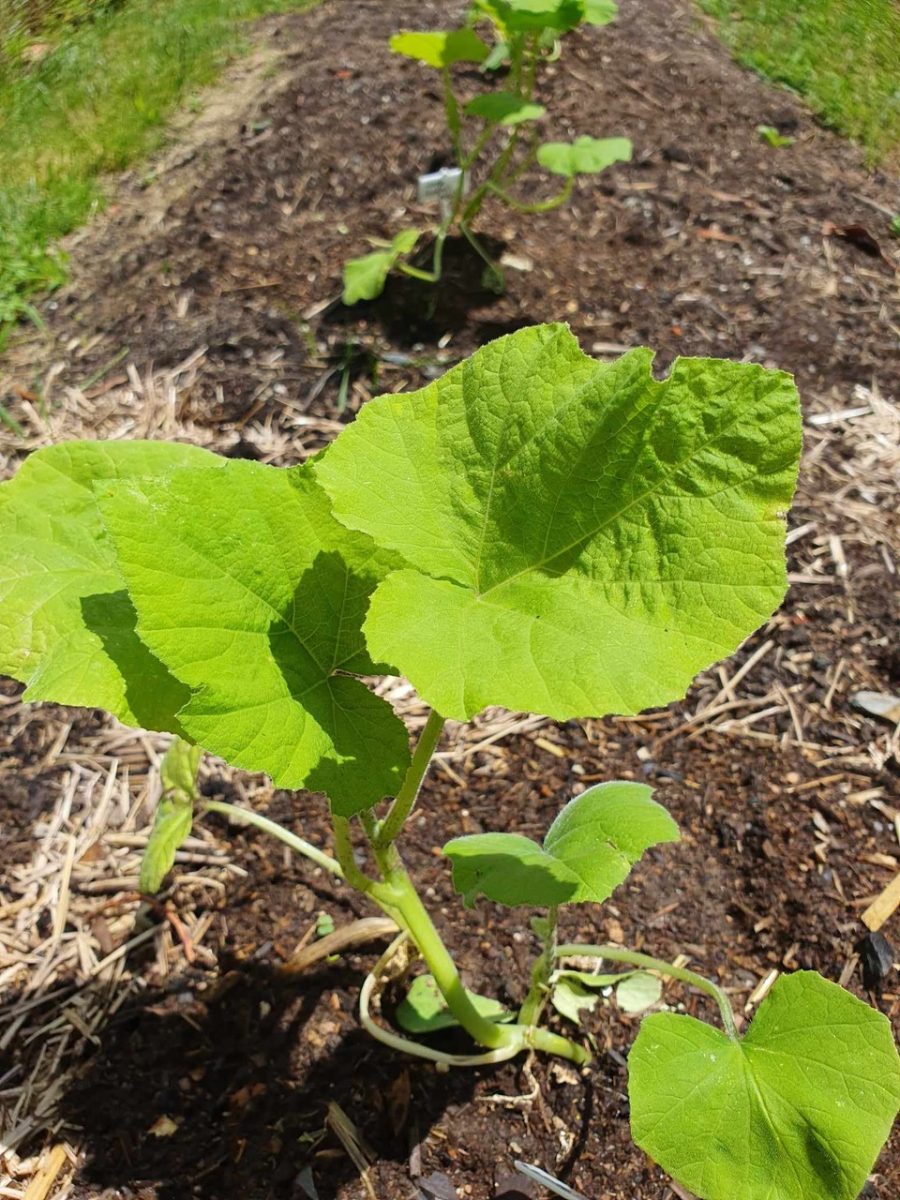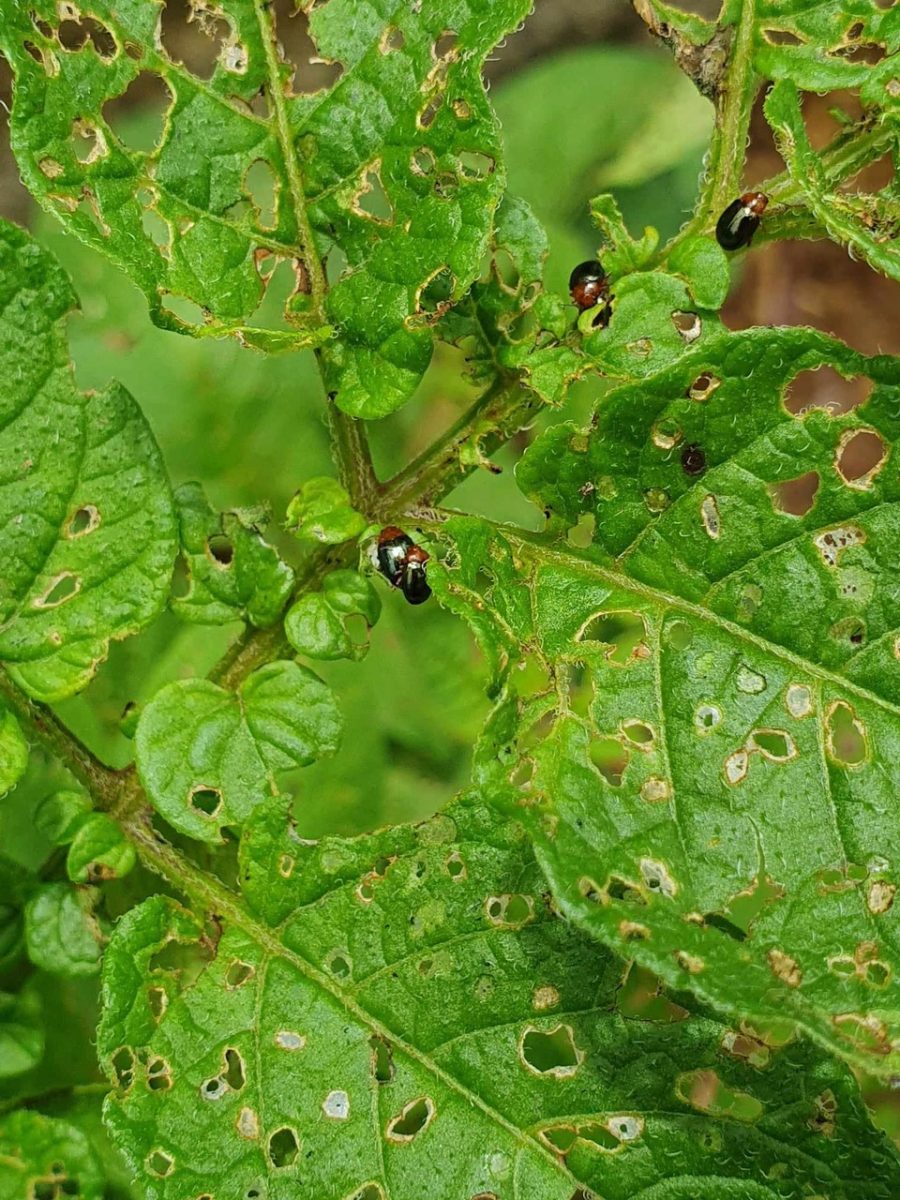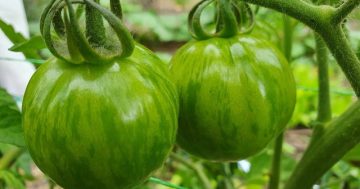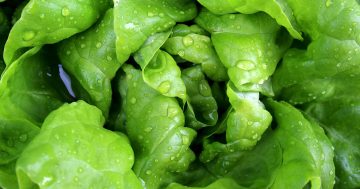
Tomatoes are flourishing this season. Photo: Supplied.
Everything in the vegetable patch is bursting with happiness at the moment.
Recent rains are welcome and the early warm spring has resulted in an abundance of snow peas, colourful lettuces of all types, beautiful European greens, delicious Asian greens, kohlrabi, silverbeet, broccolini, baby beetroots, broad beans and a bounty of fresh herbs.
If you were lucky enough to plant your tomatoes in October, they will be growing fast. I think our tomato plants grew 30 cm in a week.
Cooler weather has created impatience among the pumpkin, corn and cucumber seedlings, excited by the prospect of hot, dry weather as we move into summer.
It’s a good idea to give seedlings waiting to be planted out a good feed with a complete fertiliser at planting time and a soak in seaweed fertiliser before planting. Call it a seedling anti-depressant!
We’ve put in plenty of red cabbage, broccolini and kohlrabi as seedlings, but cauli, collards and kale seedlings will do well too. Succession planting over the last few months and into this one ensures a steady supply of these veg into autumn.

Even brassicas can be successfully planted in this warm, wet spring. Photo: Supplied.
Asian greens can be planted now, as always. The very versatile Asian choy family, providing both cooking and salad greens, may bolt to seed if the heat (and humidity) comes on too quickly and stays around after cooling periods of rain. However, these leafy greens remain tender and edible even when they begin flowering.
This is also the case for chards, silverbeet and spinach, which don’t turn bitter as the flower stalk develops. Keep planting leafy salad greens, radicchio, chicory and endive, although these may need to grow under shade cloth. Try growing somewhere with a half to a quarter of a day’s shade or even shaded by larger plants like tomatoes. Cos and Romaine lettuce types are fairly heat tolerant and bolt resistant.
Onions of all types, bulbing (red, white and brown) shallots, spring onions, walking onions, and leeks in cooler locations can still be planted through summer. They’re best planted as seedlings, called fingerlings.
Propagating onions can take some time and use up bed space unnecessarily, and seedlings will fast-track harvesting. Spring onions as seedlings can take as little as six weeks before they are ready to harvest.
Since they can be eaten as young plants or more mature ones, they can provide the essential allium flavour for your table over at least a month or so. This reduces the amount of succession planting you have to do over the summer.
Always plant these seedlings in a bunch. They like the companion of growing close together. Spacing out individual spring onion seedlings is fiddly, time-consuming and a waste of garden space. Like chives, they can be grown successfully in pots.

Pumpkin seedlings do well with additional fertiliser when planted. Photo: Supplied.
All types of onions like soil with organic matter. Fertile, friable, well-weeded soil with a low weed seed load does nicely (none of the alliums really like competition).
Bulbing onions and shallots, like garlic, need to develop good vegetative growth before bulbing begins. They will benefit from a good layer of mulch and the rest of the garden as we move into a warmer summer.
Now is the time to plant climbing and bush beans. Climbing varieties will need trellising. Two rows of bush beans can be planted in a standard 75 cm bed. Two seeds are planted (double planting) every 10 cm.
Climbing beans take longer to mature, but harvest continues through late summer/ autumn. Bush varieties are ready to harvest in 60 to 70 days, and beans mature in a single “flush”.
Since it’s summer, let’s discuss insect pests. They will love the heat when it settles in, particularly the white fly and cabbage butterfly caterpillar.
Manual control can significantly impact small infestations of cabbage caterpillars, removing both the caterpillar and the eggs.
Otherwise, Dipel and Neem oil are your best bet. Spray weekly or fortnightly, using both sprays alternatively. Insecticidal detergent or Neem oil is the best organic option for aphids and white fly,

A flea beetle infestation is devastating in the Wylen House potato plot. Photo: Supplied.
Potato flea is a new one for us. A most unpleasant and creepy little bug breeds in the soil, emerges and eats potato plants and leaps around like a flea. Watching them makes you want to scratch! They’re hard-shelled like the harlequin bug and tricky to eradicate as most organic sprays will not penetrate the shells of hard-backed insects.
Harlequin bugs and earwigs can be challenging. Dusts (diatomaceous earth or derris dust) are often suggested for these types of insects. These help small infestations but have had little impact on our serious problem.
We’ve resorted to pyrethrum, although this broad-spectrum organic pesticide can also wipe out all the predatory and beneficial insects. We’re currently spraying pyrethrum on the potato patch every two weeks.
Their life cycle makes them persistent pests that will reappear if their eggs and larvae are not eradicated from the soil. They are finally starting to reduce in number. Hopefully, we’ll save most of the potato crop. The earlier planting is holding up reasonably well, but recent plantings have been devastated.
Bronwyn Richards and Helen Lynch run Wynlen House Artisan Village Farm and Learning Centre, a small village organic market garden in Braidwood, NSW. Since 2006 they have grown and sold fresh vegetables, eggs, preserves and garlic and teach others to do the same.
Original Article published by Helen Lynch on Riotact.














